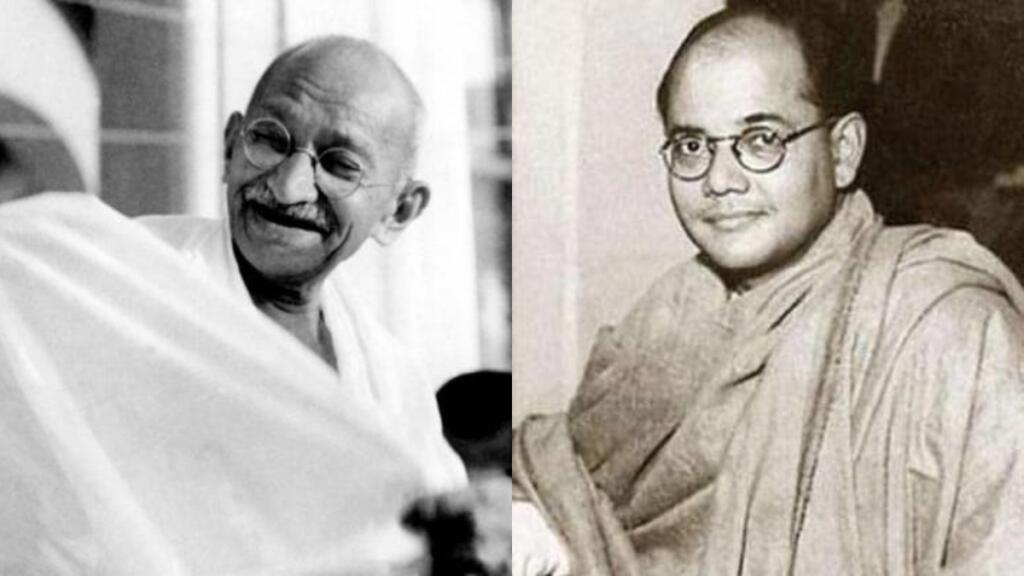Why do people solely associate Indian independence with Gandhi and completely disregard the role of the real heroes in the struggle for independence?
India’s quest for independence was marked by a rich tapestry of leaders and ideologies, each contributing to the collective effort to break free from British colonial rule. At the turn of the 20th century, the Indian National Congress emerged as a prominent platform for political expression, advocating for greater autonomy and representation within the colonial framework.
Moderates: Laying the Foundation for Reform
The Moderates, led by stalwarts like Dadabhai Naoroji, Gopal Krishna Gokhale, and Surendranath Banerjee, advocated for constitutional reforms and dialogue with the British government.
Dadabhai Naoroji, often hailed as the “Grand Old Man of India,” became the first Indian to be elected to the British Parliament in 1892. His famous work, “Poverty and Un-British Rule in India,” laid bare the economic exploitation wrought by British colonialism.
Gokhale, a mentor to a young Mohandas Karamchand Gandhi, championed social and educational reforms and stressed the importance of political participation and civic responsibility. His efforts paved the way for Gandhi’s entry into the Indian political arena.
Surendranath Banerjee, a fiery orator and journalist, played a pivotal role in mobilizing public opinion against British policies, particularly the partition of Bengal in 1905. His relentless advocacy for Indian interests earned him the title of “Indian Burke” for his impassioned defense of Indian rights.
Extremists: Galvanizing the Masses
The Extremists, represented by leaders like Bal Gangadhar Tilak, Bipin Chandra Pal, and Lala Lajpat Rai, pursued a more assertive and militant approach to challenging British rule. Tilak, fondly known as the “Father of Indian Unrest,” ignited the spark of nationalism through his newspaper, Kesari, and his call for Swaraj (self-rule) and Swadeshi (domestic production).
Bipin Chandra Pal, a passionate advocate for Indian nationalism, exhorted the youth to embrace sacrifice and struggle for the cause of freedom. His stirring speeches and writings inspired a generation of patriots to rise against colonial oppression.
Lala Lajpat Rai, popularly known as Punjab Kesari (Lion of Punjab), was a fearless leader who fearlessly confronted British authorities and championed the rights of farmers and workers. His role in organizing protests against the Simon Commission in 1928 led to his brutal lathi charge by the police, igniting widespread outrage and solidarity across the country.
Revolutionaries: The Vanguard of Armed Resistance
Parallel to the mainstream nationalist movement, revolutionary groups like the Ghadar Party, the Hindustan Socialist Republican Association (HSRA), and the Indian National Army (INA) pursued armed struggle and direct confrontation with the British colonial apparatus.
The Ghadar Party, founded by Punjabi immigrants in the United States, organized revolutionary activities aimed at overthrowing British rule in India. The Ghadar movement culminated in the infamous Ghadar Mutiny of 1915, an armed uprising launched by Indian soldiers stationed in Singapore.
The HSRA, spearheaded by firebrands like Bhagat Singh, Chandrashekhar Azad, and Sukhdev Thapar, carried out a series of daring acts of sabotage and assassinations targeting British officials. Bhagat Singh’s martyrdom following the Lahore Conspiracy Trial in 1931 galvanized popular support and inspired a new wave of revolutionary fervor.
Subhas Chandra Bose‘s INA, formed during World War II with the support of Imperial Japan, aimed to liberate India from British rule through armed struggle. The INA’s slogan, “Give me blood, and I shall give you freedom,” resonated deeply with Indians disillusioned by British promises of post-war reforms.
The Quit India Movement: Gandhian Call to Action
The Quit India Movement of 1942, also known as the August Kranti Movement, marked a watershed moment in India’s struggle for independence. On August 8, 1942, the All India Congress Committee passed the historic Quit India Resolution at Gowalia Tank Maidan in Bombay.
Gandhi’s leadership during the Quit India Movement galvanized millions of Indians from all walks of life to join the struggle for freedom. Sardar Vallabhbhai Patel, hailed as the “Iron Man of India,” orchestrated protests and civil disobedience across the country, mobilizing masses in defiance of colonial authority.
Subhas Chandra Bose‘s role in the Quit India Movement added a new dimension to the struggle for independence. Despite his disagreements with Gandhi and the Congress leadership, Bose’s formation of the Azad Hind Fauj (Indian National Army) and his rallying cry of “Jai Hind” inspired nationalist fervor and challenged British hegemony in India.
The Role of Ordinary Indians: Unsung Heroes of Independence
Beyond the leaders and revolutionaries, the Quit India Movement saw the active participation of millions of ordinary Indians who courageously stood up against colonial oppression. Students, farmers, workers, and women played pivotal roles in organizing protests, strikes, and acts of civil disobedience, demonstrating the widespread desire for freedom.
Aruna Asaf Ali, a prominent female leader, emerged as an iconic figure for her bravery and defiance against British rule. Her role in organizing underground activities and spreading the message of independence exemplified the spirit of resistance that permeated Indian society during the Quit India Movement.
Legacy and Conclusion
In conclusion, India’s struggle for independence was a complex and multifaceted process, shaped by diverse leaders, movements, and ideologies. It is essential to acknowledge the contributions of Moderates, Extremists, Revolutionaries, and ordinary Indians who played vital roles in the fight against British colonialism.
The sacrifices and contributions of countless individuals, from the leaders on the frontlines to the unsung heroes in the streets, paved the way for India’s eventual independence in 1947. As we reflect on this historic journey, we must remember and honor the diversity of voices and the collective resilience that defined India’s march towards freedom.
ALSO READ: Bal Gangadhar Tilak: The man who knew Gandhi before anyone else did
